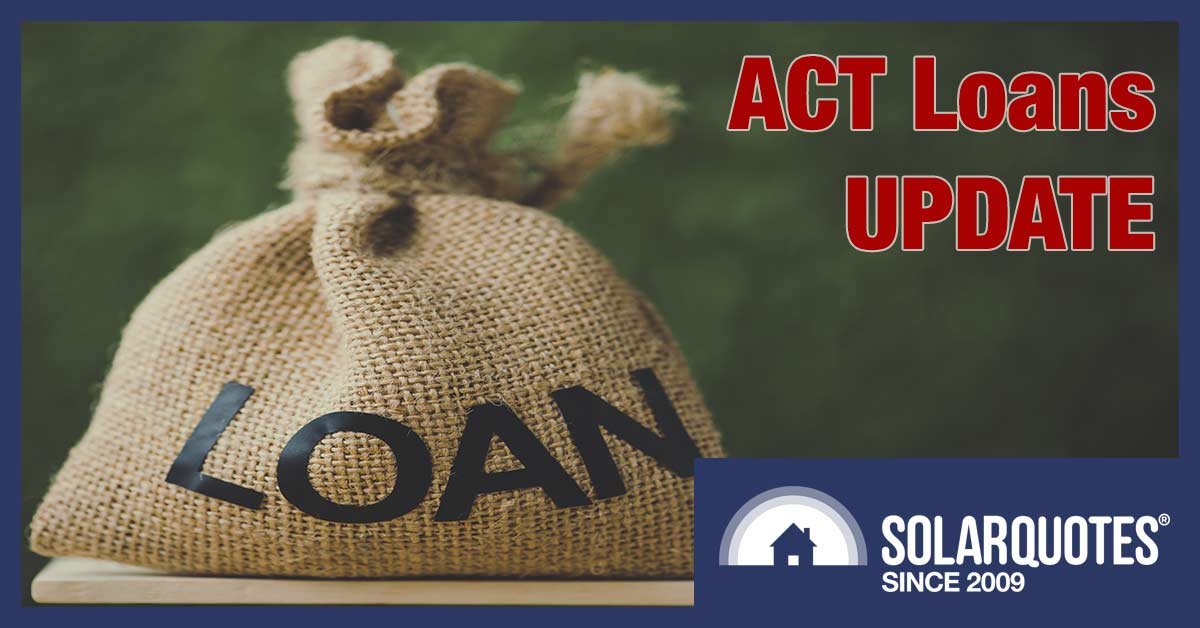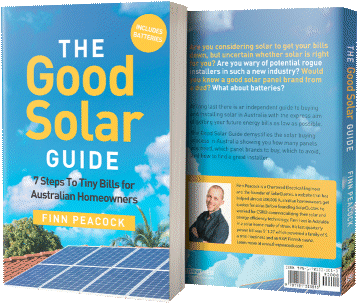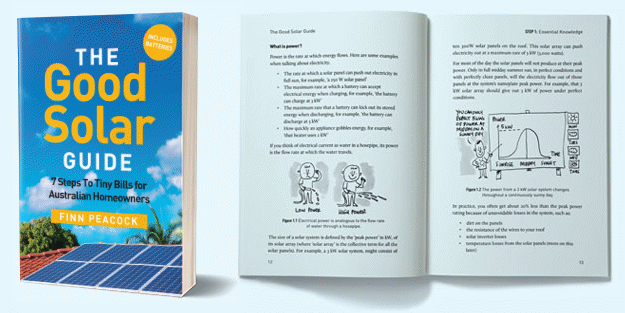 Zero-interest loans of up to $15,000 are available to most Canberra households and can be used to purchase a range of energy-saving home improvements and electric vehicles. They have no fees or charges; the loans are paid back over 10 years but can be paid off earlier without penalty.
You can use the money for…
Zero-interest loans of up to $15,000 are available to most Canberra households and can be used to purchase a range of energy-saving home improvements and electric vehicles. They have no fees or charges; the loans are paid back over 10 years but can be paid off earlier without penalty.
You can use the money for…
- Rooftop solar power
- Home batteries
- A reverse-cycle air conditioner
- A heat pump hot water system
- An electric stove top
- An Electric Vehicle (EV) charger
- A new or used EV
- Eligibility
- Loan details
- Approved items the loan can be used for
- How to apply
- How much money a zero-interest loan may save you

The ACT consists of mountains, a large blob of Canberra, and a fish’s wick.
Pensioner Rebates
ACT pensioners who live in their own homes can get a rooftop solar rebate of up to $2,500. They can also receive a separate rebate for one or more of the following:- A reverse-cycle air conditioner
- A heat pump hot water system
- An electric stovetop
Wood Heater Replacement Program
The ACT offers a rebate of up to $1,250 to replace wood fire heating with a reverse cycle air conditioner.Battery Rebate Scheme Has Ended
The ACT had a battery rebate scheme, but it’s now over. The ACT hasn’t yet updated all its online information, so don’t get your hopes up if it appears to still be around.Zero Interest Loan Eligibility
To be eligible to receive a zero-interest loan for a home improvement, you must either own a home in the ACT or live with an ACT homeowner. The “Unimproved Value” of the home must also have been under $750,000 in at least one year since 2020. This is the land value before anything is built on it, and most properties are below the limit. You can find it on your rates notice or by searching this website. If you want to use the loan to buy an EV, you must be a resident of the ACT and have an ACT driver’s licence. The zero-interest loans are through the Brighte money lending organisation, and applicants must meet the usual criteria for a personal loan. These include:- A good credit rating
- The ability to make repayments without difficulty
Community Groups Can Apply
Community Groups can also apply to borrow up to $15,000. If interested, here are links to the Terms and Conditions, the Guidelines, and Frequently Asked Questions.One Loan Per Household
Only one zero-interest loan can be made per household. But some money can be borrowed to buy an approved item, and then the loan can be expanded later by borrowing more to buy another approved item. The total amount borrowed as a zero-interest loan can’t exceed $15,000 per household, even if some has been paid back. For example, a household could borrow $9,000 to install rooftop solar and later borrow $6,000 to put towards a home battery. But even though they’ve paid back some of the money on the solar system, the total amount borrowed as a zero-interest loan can never exceed $15,000. If your household is unusually large, you can ask the ACT Government to consider allowing more than one member to take out a zero-interest loan. This will be considered on a case-by-case basis.Three Years Left To Borrow?
The ACT says they can close the scheme to new entrants at any time, but it will likely remain open until 2026 and possibly later. If you want a zero-interest loan, I recommend applying within the next three years. If you want to be certain you won’t miss out, the earlier, the better. But I’m not suggesting you rush. It should be fine to take your time and consider your options.Repayments
The minimum loan amount is $2,000. Loans are normally paid back over 10 years, with no fees or charges. Here are the monthly repayments for various loan amounts:- $2,000 loan — $17 monthly repayment
- $5,000 loan — $42 monthly repayment
- $10,000 loan — $83 monthly repayment
- $15,000 loan — $125 monthly repayment
Fees For Falling Behind
While there are normally no fees, there is an exception if you fall behind in payments, and you can be charged in arrears. This sounds painful, so I recommend avoiding this. It also means that borrowing money can make falling on hard times even harder.Loan Responsibility
Any ACT homeowner or adult living with one can apply to take out a zero-interest loan for the household. But whoever’s name is on the loan is the person who will be held responsible for repayments. So, for home improvements, my advice is for the homeowner always to be the one who takes out the loan. You don’t want to be in a situation where you’re kicked out of a home but still responsible for paying for home improvements.You Can Borrow Over $15,000 — As A Normal Loan
If you wish to purchase an approved item that costs more than $15,000, you can borrow over that amount — but not as a zero-interest loan. If Brighte thinks you’re good for it, they may lend you the extra money required. But they will treat the portion above $15,000 as a personal loan, and you’ll have to pay their usual fees and interest on the extra amount. This means that if you have your eye on a brand new Tesla Model 3, which is around $65,000 for the cheapest version, you could borrow the first $15,000 interest-free and — if Brighte approves — you could borrow the remainder as a personal loan. You can, of course, seek a loan for the additional amount from another lender.It’s Possible To Use It For Investment Properties
Landlords who live in their own home in the ACT can take out a zero-interest loan and spend it on improvements for their own home or spend some or all of it on investment properties they own in the ACT. No matter how many ACT properties a landlord may have, they can only take out one zero-interest loan for a maximum of $15,000.Home Improvements
The home improvements the loans can be used for are:- Rooftop solar
- Home batteries
- EV chargers
- Reverse-cycle air conditioners
- Heat pump hot water systems
- Electric stove tops
Upgrading Single Phase Power to 3-Phase
Most homes have single-phase power, but upgrading to 3-phase power can allow the installation of a larger solar system or a faster EV charger. It can also allow the installation of appliances such as 3-phase air conditioners that may be slightly more energy efficient than single-phase versions. The zero-interest loan can be used to pay for this upgrade, provided it is used to support the installation of another approved item. Unfortunately, upgrading to 3-phase power can isn’t cheap. It can cost up to $6,000 in the ACT.Getting Off Gas
If a household uses the loan to replace gas appliances, they can also use loan money to permanently remove the property’s gas connection. This can be very useful because in the ACT the fee for this is a hefty $750.EV Purchases
To be eligible to get a zero-interest loan to help you buy a new or used electric car, you have to meet the following criteria:- Live in the ACT — you will have to provide evidence such as a rates notice or electricity bill.
- Hold an ACT licence.
- The vehicle must be zero emissions — plug-in hybrids aren’t eligible.
- The total cost of the EV must be less than the luxury car tax threshold for low-emission vehicles. This is currently $84,916.
Other EV Incentives
The ACT offers two other incentives for EVs that may help persuade you to buy one. These do not affect the zero-interest loans:- Two years of free registration for EVs acquired up to the 30th of June 2024.
- New electric vehicles may not have to pay stamp duty.
How To Apply
Obtaining a zero-interest loan is not a simple process and involves the following steps:- Decide what approved item or items you want the loan for.
- Attend one or more hour-long “workshops” either online or in person.
- Get one or more quotes from approved suppliers.
- Fill out the loan application.
- Get the item.
1. Decide What You Want
First, you should check if you’re eligible and then come up with at least a vague idea of what you want to use the loan for. This will help prepare you to jump through the hoops of the second step. You can expand the loan later to purchase other approved items, so there’s no need to decide everything at once. If you don’t have solar power and have a roof that isn’t heavily shaded, then I recommend getting that first. While it’s possible for there to be exceptions, this home improvement will normally provide the best return. Whether or not you plan to get an EV soon, if you intend to own a car in the future, I recommend getting as large a solar system as will reasonably fit on your roof so you’ll be ready to keep one or more electric cars charged.2. Attend 1 Or More Workshops
The ACT Government says you have to attend “an” hour-long workshop, but there are actually three of them:- Understanding solar for your home: This gives information on rooftop solar and briefly covers batteries.
- Transitioning your home from gas to all-electric: This covers energy-saving home improvements other than solar panels and batteries. It focuses on reducing gas use because this is one of the main reasons the ACT is offering zero-interest loans.
- Understanding electric vehicles: For people planning to buy an EV.
3. Get Quotes From Approved Suppliers
The next step is to get quotes for the approved items. These can only come from a list of approved suppliers. If you are getting solar panels, you could just pick an installer from the list supplied, but I recommend organising quotes through us. This will give you an installer you can be certain will do high-quality work. SolarQuotes founder Finn vets every installer in our network and backs them up with our Good Installer Guarantee. You can get quotes through us here – just enter your postcode and answer the questions that follow as best you can. When you’re asked if there is any additional information you want to provide, write: “I want to receive a zero-interest loan through the ACT Sustainable Household Scheme”.4. Fill Out The Loan Application
After you have decided on a quote to accept — or potentially quotes for multiple items — the next step is to apply for a loan through Brighte. While it’s possible they will knock you back, if you’re the sort of person who can survive ACT workshops, I figure there’s a good chance they’ll trust you with a loan.5. Get The Item
For a home improvement, the final step is to get the item installed. The loan period will begin from the day of installation. If you bought an EV then you either pick it up or get it delivered. For EVs, the loan period will start when Brighte says it does. If you don’t like the time they give, you can ask them to change it, but that’s about all the power you have — apart from not signing up for the loan in the first place.Zero-Interest Loans Can Save A Lot Of Money
Not having to pay interest is a great money saver. Here are the total repayments for a $15,000 loan borrowed over 10 years at various fixed interest rates:- 0% interest: $15,000
- 2% interest: $16,562
- 4% interest: $18,224
- 6% interest: $19,984
- 8% interest: $21,839
- 10% interest: $23,787

 RSS - Posts
RSS - Posts



I used all the $15k interest free loan as part payment for my solar PV installation. The rest of the costs for electrification were out-of-pocket, except the $3,500 ACT Government rebate on the battery component of the system (no longer available).
Solar system (48 panels for 19.92 kW, 10kW and 5kW hybrid inverters and 12.8kWh battery), 315 litre heat pump HWS and RCAC are now installed, waiting on the induction cooktop (due in next month – then away with the gas!) and the EV (due in late April).
Generated 135kWh yesterday!
Cool! Which EV are you going with?
To disconnect from gas it is only necessary to cancel the gas account. It’s not worth paying $750 for physical removal of the meter and you don’t have to.
Good to hear. I was concerned they might require it.
I’m getting a BYD Atto3 ER. Best of the affordable (i.e. what I can afford) EVs
I hope it goes well for you. In case you missed it, Michael test drove one:
https://www.solarquotes.com.au/blog/byd-atto-3-review/
Re the wood stove replacement scheme.
I assume it’s possible to game it, say, by getting your home an interest-free loan rcac at the same time as getting rid of your aged wood burner … & then later installing a brand new wood burner? Would anyone know the frequency of such?
ie any governance here, data collection, …?